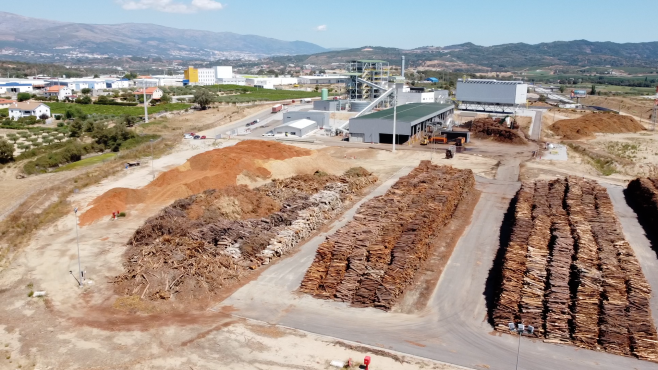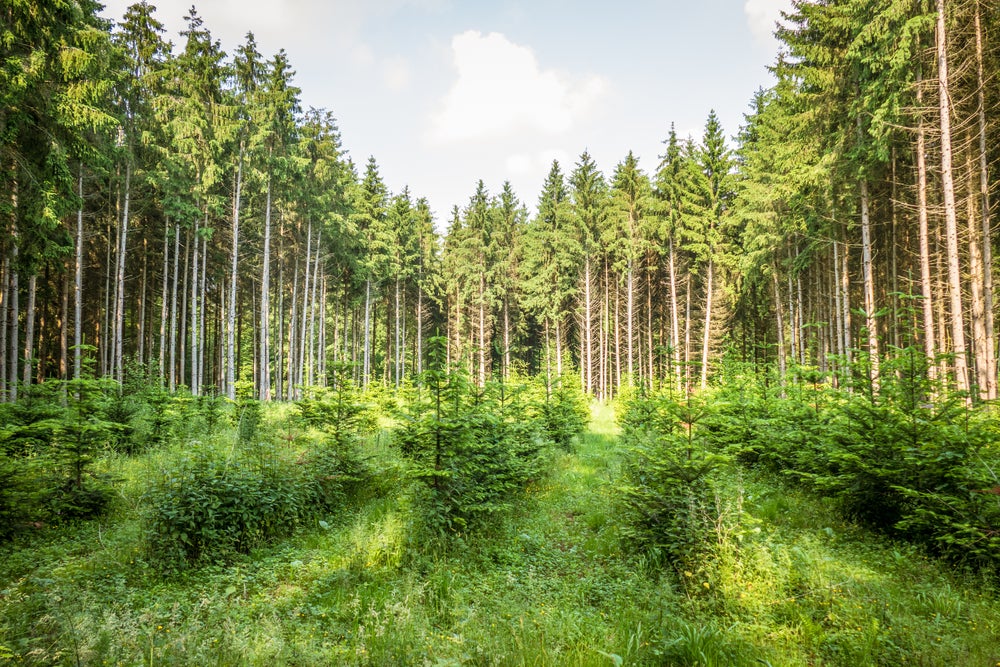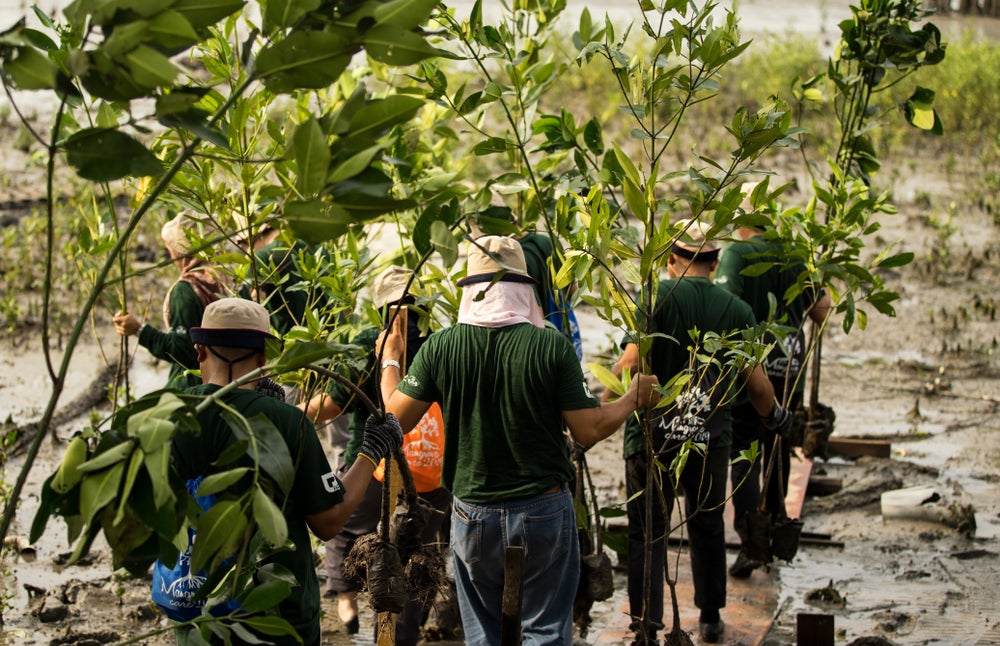The EU has led the way in including the burning of “sustainable” wood in renewable energy goals. However, as global emissions fail to drop, the window for climate action narrows, and natural habitats and species numbers shrink, experts are increasingly calling time on this practice.
Scientists and NGOs want subsidies for biomass stopped and wood from forests no longer considered as a renewable energy source. The European Commission and others, though, remain insistent that without biomass, clean energy and climate goals will not be met.

Biomass has been part of the global climate regime since its inception in the 1990s with wood largely considered ‘climate neutral’ based on the understanding that new trees capture the carbon released during the burning of older members of the forest. However, opposition to this straightforward interpretation is growing.
The idea of forest biomass as ‘climate neutral’ is “motivated by a simplification of greenhouse gas accounting, limited knowledge of the timing and permanency of carbon storage in forests and soil, and some parties being concerned about an additional challenge to reduce emissions if CO2 from deforestation is fully accounted”, says Asbjørn Torvanger, senior researcher at the Centre for International Climate Research (CICERO) in Oslo, Norway.
In addition, “the expansion of human activities and land use for food production and infrastructure is putting pressure on forests and other land categories, reducing their biomass production capacity”, adds Torvanger. Climate change and subsequent temperature increases may also reduce carbon storage.
How well do you really know your competitors?
Access the most comprehensive Company Profiles on the market, powered by GlobalData. Save hours of research. Gain competitive edge.

Thank you!
Your download email will arrive shortly
Not ready to buy yet? Download a free sample
We are confident about the unique quality of our Company Profiles. However, we want you to make the most beneficial decision for your business, so we offer a free sample that you can download by submitting the below form
By GlobalDataSee Also:
All of this means “biomass can only play a limited role in the green transition”, he says, with different potential in different regions. Some trade-offs will also be needed, he adds. “An important strategy is to seek land uses, including biomass production, that best combine different societal goals.”
Science and policy complications
This is what the Commission must consider before publishing its ‘Fit for 55‘ package on 14 July, which will set out how the EU plans to reduce greenhouse gas emissions by 55% by 2030 compared with 1990. Lobbyists with varying goals are hoping their views on biomass will be represented in the review of the Renewable Energy Directive (RED) that will be part of these legislative proposals.
Research from the Commission’s Joint Research Centre (JRC) shows carbon sinks in the EU are not growing as fast as they should be and that burning forest biomass can be worse than burning coal. However, removing biomass from the renewable mix would likely put Europe’s ambitious climate targets out of reach.
Biomass, as a “sustainably sourced renewable energy is essential to fight climate change”, says Tim McPhie, the Commission’s energy and climate spokesperson. “Intact forests and sustainable forest management” are important to reach the EU’s climate target, halt biodiversity loss and protect habitats, he adds. The EU committed in its recently agreed climate law to increase natural sinks, says McPhie. “Planting trees and scaling up Europe’s forests is a priority,” he states.
The Commission says it is working to ensure sustainable practices and minimise the use of whole trees and food and feed crops through updates to the RED and the EU’s 2030 Biodiversity Strategy. However, despite this language, “everything remains potentially eligible [for biomass], from sawdust to tree trunks and stumps”, says Alex Mason from WWF’s European office. The sustainability criteria also, for the moment at least, only covers biomass burned in industrial installations over 20MW. Likewise, the EU executive says it wants to ensure “full carbon accounting”, but working out the full impact of burning trees is a tricky business.
“There is, and will continue to be, a mismatch between how carbon cycles function from a natural science point of view, and how we count, estimate and govern carbon because these issues are extremely complicated – both on the science and policy side,” says Erlend Hermansen, research director at CICERO. “The Commission is serious about the net-zero target, but trying to find a way forward for how emissions can be calculated, reported and governed towards such a target, which at the same time is compatible with the global climate regime, is not an easy task,” he believes.
Leaky bathtub
Mary Booth is director of the US-based Partnership for Policy Integrity, which provides scientific and legal support on environmental issues, and author of Paper Tiger, a report that details a clear line of argument for ending the use of forest biomass as a renewable energy source. “The Commission’s own experts show biomass is not carbon neutral,” she says, referring to a 2016 report from the JRC. “Commission scientists have been warning for years that wood burning emits more CO2 per unit than fossil fuels and that there is a carbon debt problem. It shows that emissions from burning biomass can take decades to centuries to pay back, but we need to reduce emissions now.”
Booth adds: “Burning wood to produce 1MW of electricity puts 50% more CO2 in the atmosphere than burning coal and 200–300% the CO2 of natural gas.” This is not an argument for more gas, but to stop incentivising biomass and instead pump money into renewable energy technologies such as wind, solar and geothermal, she says. “Fossil fuels represent millions of years of compressed energy; it is obscene to think we can replace them with wood,” says Booth.
Booth is also concerned about the negative impact of using forest biomass on Europe’s carbon sinks. “The EU forest carbon sink is decreasing,” says Booth. “We are chewing into it. We are making it less effective.” She compares the carbon sink to a bathtub. “CO2 in the atmosphere is the water in the tub, emissions are water coming in at the tap and the forest carbon sink is water coming out of the drain,” says Booth. “If you want to reduce CO2, you need to switch off the tap and increase the size of the drain so more CO2 goes out of the bathtub.” By burning biomass, the world is increasing the emissions pouring in and decreasing the drain.
The only way to square the circle of tackling climate change and biodiversity loss, and remove the impacts on health and air pollution from burning wood, is to “take forest biomass out of the EU renewable energy directive, get rid of the Potemkin sustainability criteria, stop subsidising biomass and invest instead in other renewable energies”, says Booth.
Everything can be sustainable
However, industry sees the situation somewhat differently. “The debate is toxic,” says Giulia Cancian, policy director at Bioenergy Europe. She points to decarbonisation scenarios such as the recent net-zero emissions report from the International Energy Agency (IEA), which show "modern biomass has a key role. Without biomass we can't make it”. Opponents say reaching the bioenergy target set by the IEA would increase the total land area devoted to bioenergy production by 25% by 2050, an area the size of India and Pakistan combined.
Cancian is also concerned about the Commission making further changes to the RED when, under the original proposal, industry would have had "until 2023 to check whether the sustainability criteria were working”.
Constant change will “endanger business decisions”, she says. “We would also like to avoid excessive red tape for smaller installations, which don’t necessarily have the administrative capacity to demonstrate compliance [with sustainability criteria].”
Industry is likewise worried about “the possibility of bioenergy feedstock discrimination”, whereby certain types of wood would be disallowed from being used for biomass. “Any feedstock can be sustainable,” she insists.
However, this idea is an anathema to many scientists and NGOs. “What matters is what you are burning, not how it was produced,” says WWF's Mason. “Whether it is sawdust or large tree trunks makes a huge difference to the carbon impact, as the latest JRC report on forest biomass [published in 2021] shows.”
Some parts of the bioenergy industry are beginning to change. The conversion from coal to biomass of many of Europe’s district heating systems was considered a win for the climate. Denmark, one of Europe’s district heating leaders, sources more than 40% of its energy from straw, wood chips, pellets and firewood, but is starting to favour other solutions.
When the Danish Parliament decided in 2012 to substitute coal with biomass in the electricity and heating sectors, "energy companies invested heavily in that transition”, says Maria Dahl Hedegaard, consultant with the Danish District Heating Association. However, the share of biomass will decrease as "other sources mature and take over”.
She adds: "Later this year we expect to surpass 500MW of large-scale heat pumps [in the district heating grid] and we are pursuing investment to make geothermal a large-scale success. Surplus energy from power-to-X, data centres and industry could also make a substantial contribution.”
No support needed
Growth in renewables in the energy sector will come from a range of sources, although biomass will remain a decarbonisation tool for the heating sector, says Pauline Lucas from Brussels-based district energy network Euroheat & Power. District heating systems will “not automatically switch from coal to biomass, but will rely on flexibility, thermal storage, waste heat, heat pumps and other technologies”.
Helsinki is a good example of this thinking, says Lucas. More than half of the city’s heat is still produced from coal. It recently held a €1m ($1.21m) challenge competition to answer the question: “How can we decarbonise the heating of Helsinki, using as little biomass as possible?” The winning entries show this is more than possible.
Probably the best known example of biomass replacing coal is the UK power station Drax. Deemed the “largest decarbonisation project in Europe”, it has reduced emissions by more than 85% and aims to become carbon negative by 2030 by deploying bioenergy with carbon capture and storage (BECCS). However, the UK Climate Change Committee is not the only voice to question its carbon neutrality assumptions with “concerns over the associated lifecycle emissions using biomass”.
All this wood burning does not come cheap. Energy and climate think tank Ember estimates the proposed BECCS plant will require £31.7bn in subsidies on top of the £832m Drax received in direct government subsidies for biomass in 2020.
“Burning wood is a mature technology that doesn’t need support,” says Mason. It would be much simpler to get rid of the complex system of sustainability criteria by ending incentives for burning trees and crops, he adds. “Some bioenergy makes sense in terms of carbon benefits compared with fossil fuels, such as waste and residues from food and the paper industry, municipal waste wood or agricultural waste. And there will always be some traditional firewood use in domestic settings, but using a growing chunk of forest biomass to replace coal on an industrial scale for heat and power, which is likely to increase emissions for decades, makes no sense."
Playing dangerous games
Erle Ellis, a US environmental scientist, says: “There is an idea about using biomass as a transition energy, but the best transition is when we come off biomass. Using the biosphere as a source of energy means something else can’t be done.” He cites the need to feed “billions more people” in the coming decades and to expand the conservation of biodiversity. “We have alternatives for energy; we don’t have alternatives for food or habitats. We need to stop buying time by using the biosphere as a buffer. Crops are needed for food otherwise prices will go up. Using land for bioenergy is a dangerous game played by the richest and one that will ultimately harm the poorest.”
Mason deems the current biomass rules “a stain on EU climate leadership”. The 'Fit for 55' package will be the Commission’s opportunity to show if it has learnt from the “mistakes we made with crop-based biofuels,” he says. “The Commission will have to do a U-turn at some point, but how much damage will be done and how much forest will be burnt before it does?”
Where the EU leads, others are likely to follow. “If the EU stops it will send a message to Japan and Korea not to follow it down the rabbit hole,” says Booth. Both countries are growing their use of wood pellets.
“There is never no cost,” says Ellis. “We can’t be utopian; there will have to be trade-offs.” However, data suggests that relying on the world’s forests to heat our homes and power our lives might not be the best one to accept.






